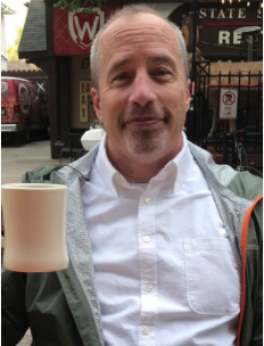
We are excited to begin to rebuild our faculty after years of attrition. Our first new, exciting building block is Professor Catalina Iannone, whose PhD is from University of Texas, Austin, and who is joining the Iberian Studies section of our department. Professor Iannone’s research addresses spatial aspects of how communities form on the Iberian Peninsula, including the Mouraria neighborhood in Lisbon and the Lavapiés neighborhood in Madrid, including racial and socioeconomic dimensions of these spaces. We are very excited to see the results of her current GIS project, entitled “The Atlas of Resistance”.
We bid a sad farewell to Professor Elena Foulis, who leaves us this year to take a tenure-track position in her native Texas, at Texas A&M, San Antonio. Professor Foulis has led our extremely popular Spanish in Ohio service -earning course as well as having been our Heritage Spanish instructor. She has graciously worked to facilitate a smooth transition of the Spanish in Ohio course to the able hands of our new Assistant Professor of Teaching, Stephanie Aubry. We are looking forward to continuing Elena’s excellent work and to hiring a new Heritage Spanish scholar soon.
In this issue of our newsletter, we also include an interview of one of our star undergraduate curators of the Andean and Amazonian Indigenous Art and Cultural Artifacts Research Collection, Hallie Fried. To learn more, one can listen to Hallie’s new podcast series, entitled “Let’s Just Talk”. Hallie will be attending the University of Michigan’s Master’s program in Education, with an eye toward high school history teaching.
Another important change to our department is the arrival of Dr. Nicole Sedor, who comes to us from her PhD program at the University of Buffalo, where she wrote her dissertation on Integrated Performance Assessments (IPAs – no, not the liquid kind!). Most people remember endless multiple-choice-type grammar tests as part of their adult second language-learning experience, but with IPAs, progress in language program classes is measured using the same types of tasks that are taught in the language program. In this way, we will test much more the way that we teach, which is always a good pedagogical move. Dr. Sedor will piloting the new assessments in our language program and researching their efficacy. This is particularly exciting in the context of our new 19-student-maximum language courses, as opposed to the previous 27-student limit. We are hopeful that these profound changes in how we teach Spanish, Portuguese and Quechua will consolidate our place as an institution committed to effective and scholarly approaches to language teaching.
Finally, one of our graduating PhD students, Sebastián Muñoz, participated in a production of Sweat, in the Department of Theatre, Film and Media Arts. As a Latin American Literatures and Cultures student, this opportunity appears to have been quite rewarding for Sebastián, who appreciates the perspective it offered on race, immigration and class in the US. Though he had to work at it 7 days a week during part of the run-up to performances, this kind of opportunity for graduate students is one of the things that makes a large, public university like OSU appealing. There are so many more activities to participate in than anyone could ever actually accomplish. This abundance of riches continues to attract top-notch students from around the world to our program..
